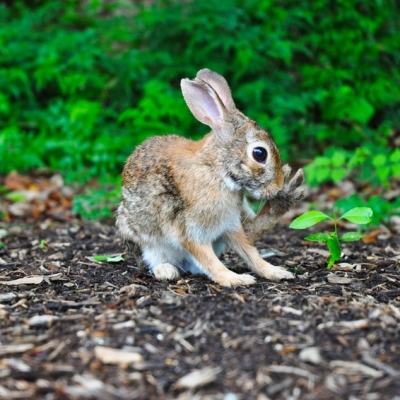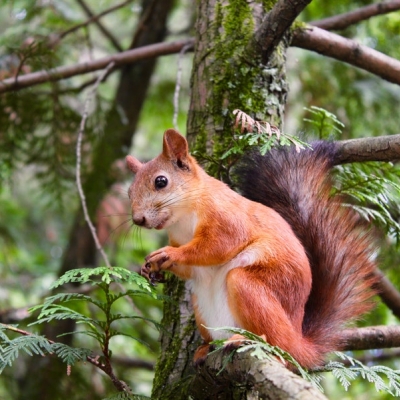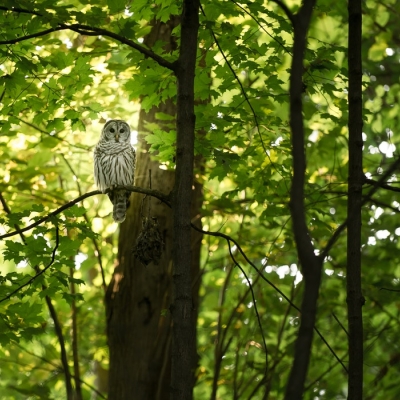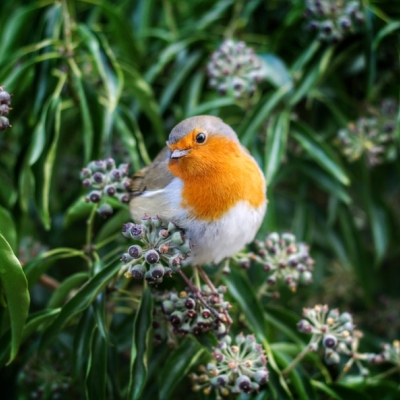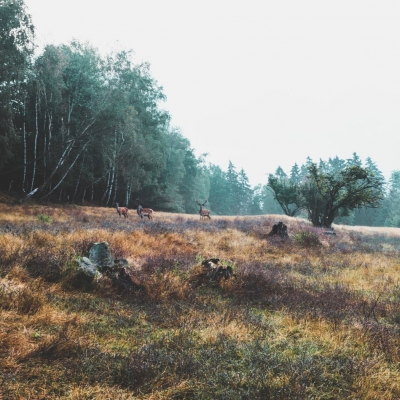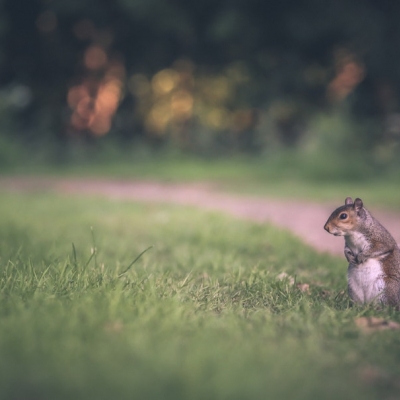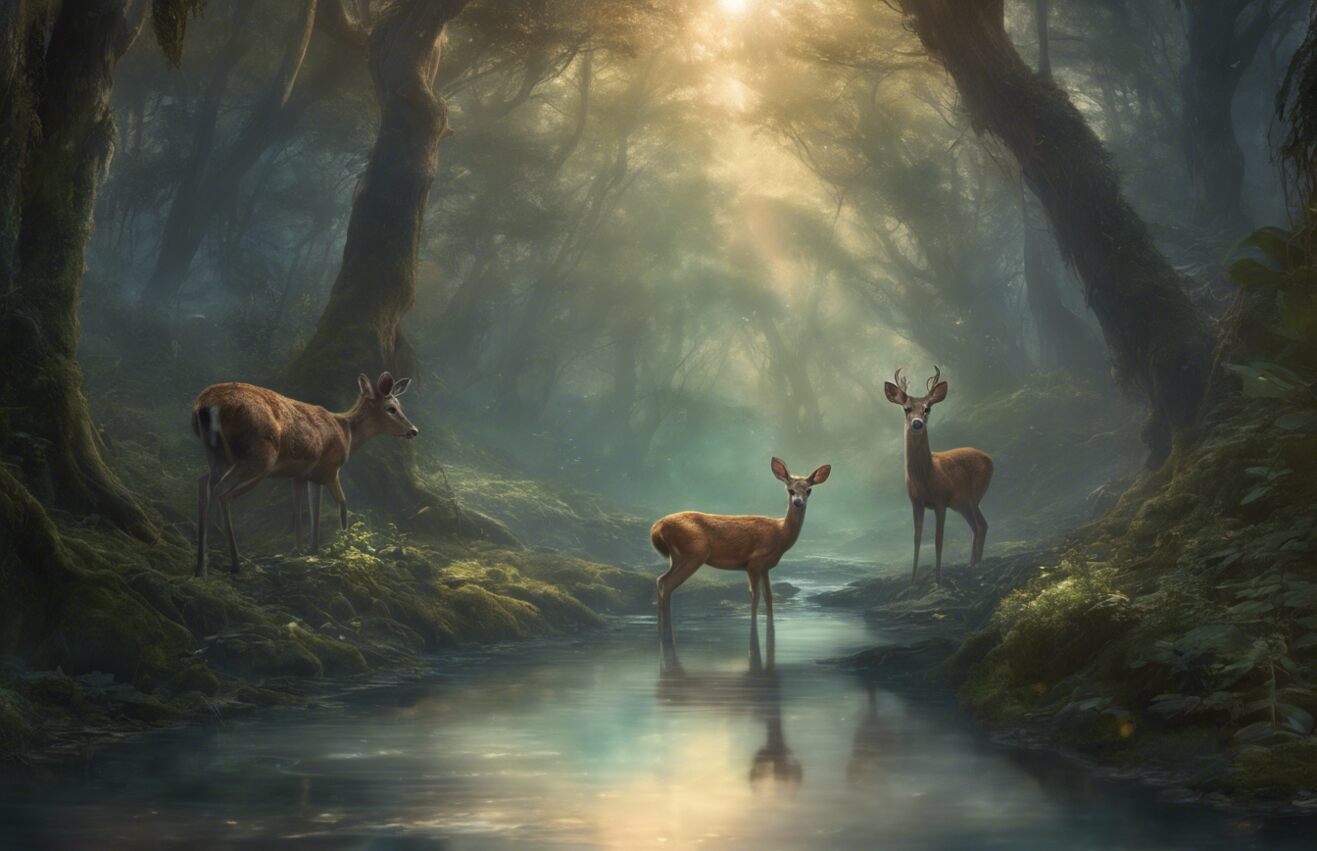
Hello there, today we'll explore the fascinating field of wildlife habitat management in woods today and see why it's an essential component of the puzzle for preserving the stunning wildlife on our world.
There is a dense forest full of life somewhere not too far from where you are. Squirrels occupied collecting nuts, deer gracefully moving, and birds singing sweetly. It sounds as though nature herself is conducting the symphony. Imagine now that land management practices gone wrong or deforestation had upset this harmonious ecosystem. That alone breaks my heart.
Natural ecosystem conservation and preservation heavily depend on wildlife habitat management. Having walked through forests for many hours, I have seen directly how habitat loss affects animal populations. A harsh reality out there is species losing their homes, battling to find food and water, and being threatened by predators because they have nowhere to hide.
Thankfully, in these circumstances wildlife habitat management is the unsung hero. Our furry (and not so furry) friends can have the resources they need to live by carefully designing and putting into practice plans to preserve and improve habitats within forests. Creating bird nesting places, paving the way for bigger animals to move around freely, and keeping a varied vegetation that supports a range of species are all part of this proactive approach.
Wildlife corridor development is an essential component of wildlife habitat management. Animals may travel between different places in quest of food, mates, and shelter thanks to these pathways that link dispersed habitats. By preserving these pathways, we support genetic diversity within species and help avoid population isolation.
Invasive species are removed, native vegetation is planted, and sustainable land use techniques are implemented as part of habitat management initiatives. Wildlife is benefited by these activities, which also improve ecosystem health generally by making ecosystems more resilient to environmental changes like climate change and natural calamities.
Essentially, the maintenance of wildlife habitats is essential to guaranteeing biodiversity and ecological balance in forest ecosystem. Our ability to preserve and improve wildlife species' habitats will help to build a more sustainable future in which people and nature may live in harmony.
Still, maintaining whole ecosystems is just as important as safeguarding specific species. Every plant, insect, bird and mammal contributes in a different way to the complex web of existence. Like a thread pulled from a tapestry, the entire system can come apart when one component disappears.
How then might we support this admirable goal? There are ways that everyone of us can help, regardless of experience level in the woods or just passion for hiking. Encourage environmentally friendly forestry techniques, lend a hand with local habitat restoration projects, and spread the word about the value of conservation. Every little effort adds up to a big difference.
Wildlife habitat management protects the biological variety of our world for coming generations, not just cute animals. As custodians of this amazing planet, let us welcome our duty and cooperate to make sure that forests continue to be safe havens for wildlife. It is, after all, our house as well as theirs.
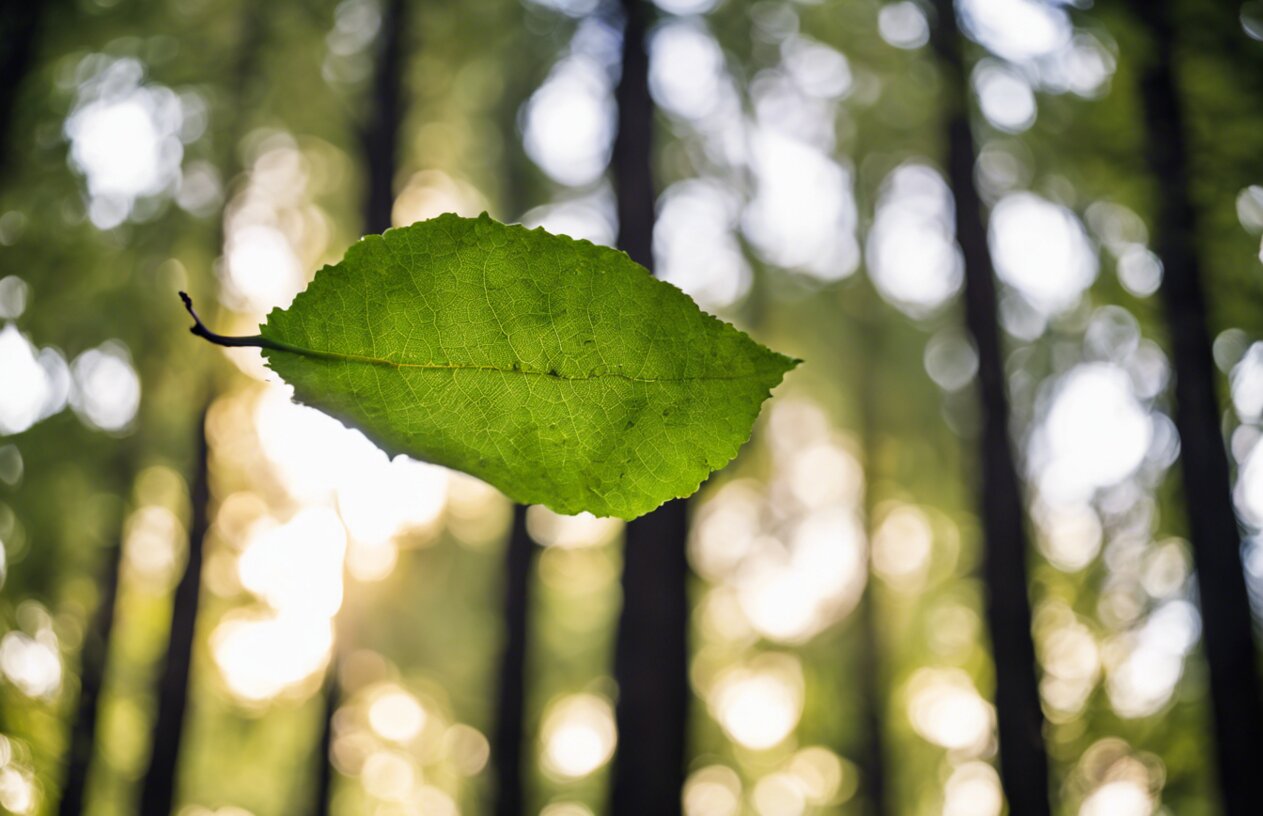
We're delving into the amazing realm of tree species identification today. Knowing the various species of trees can really improve your outdoor experience, regardless of experience level with trees.
Let us first discuss the need of tree species identification. Understanding local ecosystems and biodiversity to making wise choices about conservation initiatives are just a few of the ways that knowing the kinds of trees around you can be helpful. Going through the woods and being able to identify that majestic oak or elegant maple is also just plain fascinating.
Alright, ready to get started? Great! Now on to some methods of tree species identification now. Among the most often used techniques is leaf examination. No matter the tree there are important hints in the size, arrangement, patterns, and shape of the leaves. Because of their characteristic palmate shape and serrated edges, maple leaves, for instance, are readily identifiable.
Bark is a further important characteristic to notice. Between species, bark varies in texture, color, and pattern. Consider the distinctively white bark of birches or the deeply creased bark of an old oak; each has a different story to tell.
Remember fruit and flowers as well! These reproductive structures may be identifying clues. Picture the vivid cherry tree blossoms or the spiky sweetgum balls strewn over the ground.
There are also many of apps available that use image recognition technology to help identify trees based on pictures you take for those tech-savvy tree lovers.
When I first got started I found carrying a pocket guidebook with vibrant pictures to be useful when I first started learning about tree species identification. My nature walks became thrilling treasure hunts as a result!
Let's quickly review now using instances:
- Oak Trees: Recognizable by their lobed leaves and of course the acorns they produce.
- Pine Trees: Distinguished by clusters of needle-like leaves that make up the body of the tree.
- Maple Trees: Easily identified by their distinctive palmate-shaped leaves which appear on the Canadian flag.
- Birch Trees: Characterized by their striking white bark that is a personal favorite of mine.
- Apple Trees: Hum, these can be a bit tricky, but just watch for delicious fruits in the fall and fragrant blossoms in the spring.
I selected trees that everyone will readily know so that children will find it easy to follow along. Tree identification comes down to patterns, and how well we can recognize them. Recall that when identifying tree species, practice makes perfect. Leave the house, pay close attention, and before long you'll be identifying various trees like an expert!
So the next time you're out enjoying the wonders of nature, stop to notice the variety of trees all around you; they all have a unique story to tell. Happy searching for trees!

Deciduous Trees
Because of that, the angle of the sun rays changes throughout the year. The Earth is both revolving around the Sun and rotating in its own axis.
That means that in some portions of the year, the same geographical place receives different quantities and qualities of light.
With the changes in temperature and the amount of light received throughout the day, deciduous trees know that winter is coming.
They have evolved to respond to this by stopping the flow of nutrients and water to the leaves which causes them to wither and dry and fall to the ground. As the weather gets warmer more water becomes available for the tree, it can then resume growing leaves and obtaining nutrients again.
Without this protective cycle they would continue pouring nutrients and what limited water there is in the ground into the leaves which would cause them to freeze. It's a bit like how your blood flow pulls away from your fingers and toes, causing them to get cold faster than the rest of your body when exposed to cold weather.
The same thing happens here, but the process, while not alien has a slightly different execution.
Conifers (Needle Bearing Trees)

Conifers avoid having to lose their leaves by having their leaves grow hard and therefore aren't as easily affected by changes in temperature.
Color Changes
First, the leaves loose their green a the chlorophyll breaks down, then the yellow pigments, then the red ones. Only when there are no more pigmented cells left, can the leaf drops off and die.
A leaf is in many ways like your skin. And like your skin the leaves are shed once they are no longer needed in much the same way you shed dead skin cells.
Chlorophyll
Chlorophyll, the pigments that gives plants their distinctive green colour, is a molecule that absorbs sunlight and used that energy to make chemical reactions.
Chlorophyll works better at certain wavelenghts. Trees have a lot of different pigments (color compounds for absorbing light) in their leaves, just like humans do. These pigments absorb different colors of light, but they also decay at different rates when the leaves die. When fall rolls around, the reason you see all those nifty color changes is because the cells in the leaf, with the different pigments, start to break down as we've learned.
But there is another effect that we should look at.
Other effect of differential radiation (quality of the light) is that the places with less sunlight become colder.
Even though leaves can work in cold environments, the payout is minor (compared to a warmer environment), thus, the plant "decides" to turn off the photosynthetic system, move all its resources to storage and wait for everything to be better.

I have people ask me from time to time what is a good way to get closer to nature. Two words: bird watching.
It is easier than you think. As easy as putting a bird feeder in your own yard or window. Also a bird bath -- you don't need to spend a lot of money, any shallow pan filled with water will work as long as it isn't any deeper than 2 inches.
For more advanced outing you can stay local. Whether you're urban or rural there'll be so much more birdlife close by than you think. Get a field guide to your country and a pair of binoculars that suits your budget and then get out there. Watch out for habits of common birds as well as just trying to tick them off a list. Some of the best bird watching can be watching a new behaviour of a species you've seen a thousand times before.
Contact your local nature center or Parks dept. and ask them if they have birding walks in your local parks. Often, especially during migration season, local bird experts will host birding walks in birding "hot spots" in your area. These are usually free and open to the public. Contact your state's ornithological society and find out if they are hosting bird walks in your area. They will either be volunteers or experts - both happy to help. This is the best way to learn about birds. And it is fun to walk with someone who can teach you about what you are seeing and hearing.

Identifying Birds
If at all possible, you should invest in a pair of binoculars. You don't need expensive ones to start, but out in the field so many birds will be too far away to see clearly without binoculars. I keep my binoculars and a bird book next to the window.
That's why back yard birding is fun, watching birds at your feeders--you don't need binoculars!
I also use the Merlin bird ID app to identify birds, in addition to the book. So much fun of birding is learning bird songs. What I like to do is record unfamiliar bird songs on my phone, then try to match the bird song.
- Where did you see the bird? Habitat:
- Forest
- Shoreline
- Open field
- What was the bird doing? Behavior:
- Soaring overhead
- Hopping around the treetops
- Scratching around the ground
- Size & Shape?
- Get started by using comparisons to birds you know to fit it into size ranges.
- Markings (Note all markings that stand out, like stripes or bright colored areas or spots?
- Predominant color
- Secondary colors

Good boots are what makes being out in nature comfortable. Well, they are one of the things, but they are also the big thing.
Shoes with a Gore-Tex barrier are truly waterproof. Shoes with XCR (Extended Comfort Range, another Gore-Tex product) are merely water-resistant. But my shoes with XCR have never let water in, even while quickly crossing shallow streams. Waterpoof boots don't breath as well as non-waterpoof boots so your socks may have just been wet from sweat, and there's a huge hole on the top of ever single shoe where water can get in.
I've been using Vasques for 10 years now, highly recommended them since they are great boots. As are nubuk leather boots with a rubber seam above the sole and and a gore-tex liner.
The thing to remember about any shoe that is supposed to keep water out is maintanace. Reproofing boots, like with jackets, is really important to keeping the performance up. 3 years of heavy use is the best you can hope for from a pair of boots even with regualr care.

I think that it has to do with my age, the fact that either my friends have gone ahead and gotten married or are in the process of getting married. It is just natural. For me now, at this stage of my life, married seems a long way away. But with so many things you experience it when you least expect it.
I can't speak for all of you but I feel that my friends do represent at least a certain part of our society. And though I am certain that things may look different where you live. ~25 is a common age to get married. I am still studying, and I tend to move around a lot, with my "permanent residence" still marked as my parent's home. Mainly since I do not want to spend more money on an apartment that I will rarely use. Anyone that has gone through the programs I have, who has realized that their true love is the forest, and has chosen to make it their career knows that it can be disruptive for close relationships. Dating is sort of out for the foreseeable future.
I have two friends that married while still studying, and it has worked out very well for them. Another friend just got married a couple of months ago in a really beautiful open air summer wedding. And now, I have another wedding coming up later this fall. Since all of my friends share similar interests as I do, though not necessarily the same career path, it goes without saying that nature, and namely the forest has been (at least to some extent represented) in their weddings.
But is that common.
For me, this is perfect, it is everything that I expected a wedding to be.
My Dream Wedding In the Trees

I seriously never thought about my wedding. I guess you could say that I was always a little different.
When I was maybe eleven or twelve I remember being over at my best friend's house. She and her sister, myself, and another friend sat in her room and talked, this was common. But the topic turned toward boys, dating, and marriage. I recall feeling a little bit put on the spot since I had never really thought of what they called their "dream wedding." Seriously, how could you plan your dream wedding even before you met your Mr. Right?
It was awkward and I remember stuttering around and making something silly up. It was going to be a big white wedding with lots of Cala Lilies and this and that. And in essences I wasn't being true to myself. Since even at that age, none of those things really expressed who I was. I could have been more honest, but I would have gotten laughed at. As it stood I was just the uncreative one out of the group. The one that was going to have the generic white wedding. And I was fine with that.
In truth I wasn't even sure if I was going to get married. It just never seemed like something that I had on my todo list. It was on my maybe list.
Now, older (at least a little bit) and more mature (at least a little bit) I realize that I would very much like to get married some day and start a family.
And while I am not in the process of planning my dream wedding I would be lying if I told you I had not made some thoughts about it.
The real reason that it has come up for me so much is because I have experienced so many in the last couple of years. It is one thing to talk about them when you are kids, it is another to be there, to experience it first hand, and to see how happy your friends are.
It really is a magical moment for them, and as a guest you get to experience a little bit of it yourself. I have been really blessed with wonderful friends and I was thankful for the chance to be there and celebrate their happiness and things like that are contagious. I ended up getting caught up in the whole thing.
I guess that it is normal. At least it is when you hear people talk. So I guess I am like the rest of the girls I know.
My Woodland Wedding

I think that I was born in the right time. When my mother got married she really did have the white wedding. She married her first boyfriend and they had stayed together throughout high school and college and then, once they graduated they got married. A couple of years later I was born. It was the romance that we all dream about. It was one that you see idealized in movies and TV, just that their's is real, and it is just as strong today as it was then.
As I had said though, the white wedding just really isn't me. And while as nice as my mom's wedding was I really couldn't see myself in the same situation. But do I really have to be?
I say no.
Today there is so much variety, so many different ways "to get married" that it almost feels like you could get overwhelmed if you didn't have an idea of what you wanted for your big day.
And I most certainly do.
As you may have noticed from my site I am rather obsessed with nature. And more specifically the forest. It really is a glorious gift from God and it is a resource that needs to be cared for. That said I really like the way some wedding take a more rustic look. I could totally see myself with a flower crown in some fancy, yet practical dress. You can get pretty much anything you want for a wedding; invitations with a rustic woodland theme are easy to find depending on what you want to emphasis in them. And on top of that, the outdoor wedding is more common today than it has been in a long time.










